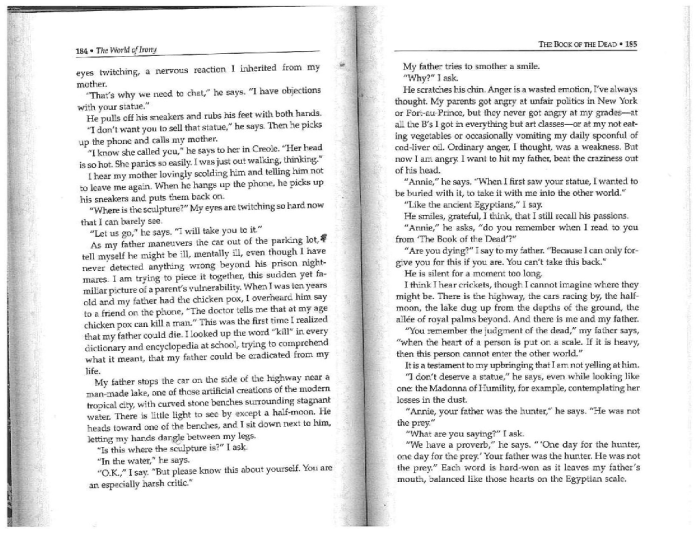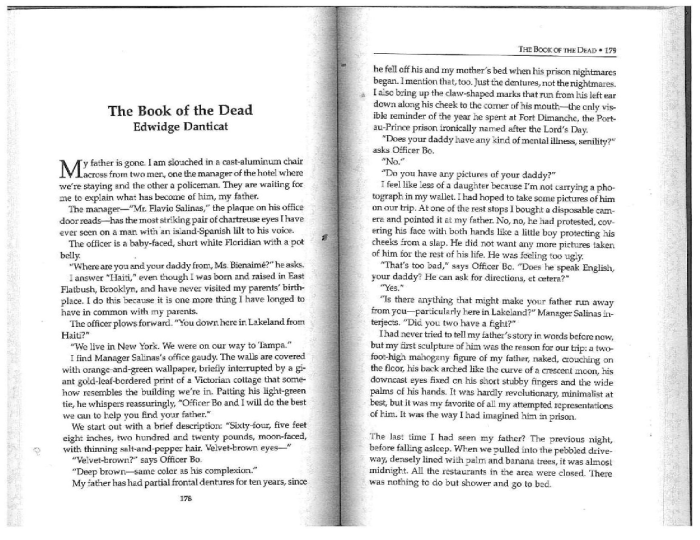Summary of the book of the dead by edwidge danticat – Edwidge Danticat’s “The Book of the Dead” is a critically acclaimed novel that delves into the complexities of identity, memory, and trauma, particularly within the Haitian diaspora. This summary provides an overview of the novel’s historical and cultural context, narrative structure, symbolism, themes, literary devices, and critical reception.
The novel explores the experiences of Haitian immigrants in the United States, capturing their struggles with displacement, loss, and the search for belonging. Danticat’s use of multiple perspectives and evocative language creates a rich and immersive reading experience that resonates deeply with readers.
Introduction
Edwidge Danticat’s “Breath, Eyes, Memory” is a poignant and critically acclaimed novel that delves into the complexities of identity, memory, and loss within the Haitian diaspora. Published in 1994, the novel has garnered widespread recognition for its exploration of the multifaceted experiences of Haitian immigrants in the United States.
Historical and Cultural Context

Haitian Diaspora
The novel is set against the backdrop of the Haitian diaspora, a term used to describe the dispersal of Haitian people from their homeland due to political turmoil, economic hardship, and natural disasters. Danticat’s novel captures the unique challenges faced by Haitian immigrants as they navigate the complexities of a new culture while grappling with the memories and traditions of their homeland.
Themes of Identity, Memory, and Loss
Within the context of the Haitian diaspora, the novel explores the intricate relationship between identity, memory, and loss. Danticat’s characters struggle to reconcile their Haitian heritage with their American experiences, leading to a sense of displacement and longing. The novel also delves into the power of memory in shaping the present, as the characters’ past experiences continue to influence their present lives.
Narrative Structure and Characters
Multiple Perspectives
The novel employs a unique narrative structure that shifts between the perspectives of two main characters, Sophie and Atie. This multi-layered approach allows Danticat to explore the same events from different vantage points, providing a nuanced understanding of the characters’ motivations and experiences.
Sophie
Sophie, a young Haitian woman, is forced to flee her homeland after witnessing the political turmoil and violence that plagued Haiti in the 1980s. As she navigates her new life in the United States, she grapples with feelings of displacement and loss.
Atie
Atie, Sophie’s mother, remains in Haiti and struggles to cope with the loss of her daughter and the memories of her past. Her perspective offers insights into the resilience of the Haitian people and the enduring power of family bonds.
Symbolism and Motifs
Breath
The symbol of breath permeates the novel, representing the struggle for survival and the resilience of the human spirit. The characters’ attempts to find their breath symbolize their search for identity and freedom.
Eyes
The eyes serve as a motif throughout the novel, representing the power of observation and the act of witnessing. Danticat’s characters are constantly observing their surroundings, both in Haiti and the United States, as they try to make sense of their experiences.
Memory
Memory plays a central role in the novel, as the characters struggle to come to terms with their past and its impact on their present lives. Danticat’s use of flashbacks and fragmented memories highlights the complex and subjective nature of memory.
Themes

Identity and Belonging, Summary of the book of the dead by edwidge danticat
The novel explores the complexities of identity and belonging within the Haitian diaspora. The characters grapple with questions of where they belong and how to reconcile their Haitian heritage with their American experiences.
Memory and Trauma
Danticat delves into the power of memory and its role in shaping the present. The novel examines the ways in which trauma can be both a burden and a source of resilience for the characters.
Loss and Resilience
Loss is a recurring theme throughout the novel, as the characters grapple with the loss of their homeland, loved ones, and their past lives. Danticat’s portrayal of loss highlights the resilience of the human spirit and the ability to find hope amidst adversity.
Literary Devices and Techniques

Magical Realism
Danticat employs magical realism, a literary technique that blends realistic elements with fantastical or surreal events. This technique allows her to explore the complex inner worlds of her characters and to create a sense of wonder and mystery.
Stream of Consciousness
The novel incorporates stream of consciousness, a narrative technique that captures the unfiltered thoughts and feelings of the characters. This technique provides readers with direct access to the characters’ innermost thoughts and emotions.
Juxtaposition
Danticat uses juxtaposition to contrast different perspectives, experiences, and cultures. By placing contrasting elements side by side, she highlights the complexities of identity and the challenges faced by the characters.
Foreshadowing
Danticat employs foreshadowing to create a sense of anticipation and suspense. By hinting at future events or outcomes, she builds tension and keeps readers engaged with the narrative.
Critical Reception and Legacy

Critical Acclaim
“Breath, Eyes, Memory” received widespread critical acclaim upon its release. Critics praised Danticat’s evocative prose, nuanced characterization, and exploration of complex themes. The novel won numerous awards, including the National Book Critics Circle Award and the American Book Award.
Enduring Legacy
The novel has had a lasting impact on contemporary literature and has become a staple of Caribbean and African American studies. Danticat’s work has been credited with bringing the experiences of the Haitian diaspora to a wider audience and has inspired a new generation of writers.
FAQ Corner: Summary Of The Book Of The Dead By Edwidge Danticat
What is the significance of the “Book of the Dead” in the novel?
The “Book of the Dead” is a collection of stories passed down through generations of Haitian families. It represents the collective memory of the Haitian people and serves as a source of comfort and connection for those who have experienced trauma and loss.
How does Danticat use magical realism in the novel?
Danticat incorporates elements of magical realism to create a surreal and dreamlike atmosphere that reflects the characters’ experiences of trauma and displacement. These elements allow her to explore the complexities of memory and the ways in which the past continues to shape the present.
What are the major themes explored in the novel?
The novel explores themes such as the complexities of identity and belonging, the power of memory and its role in shaping the present, the consequences of trauma and loss, and the resilience of the human spirit.
